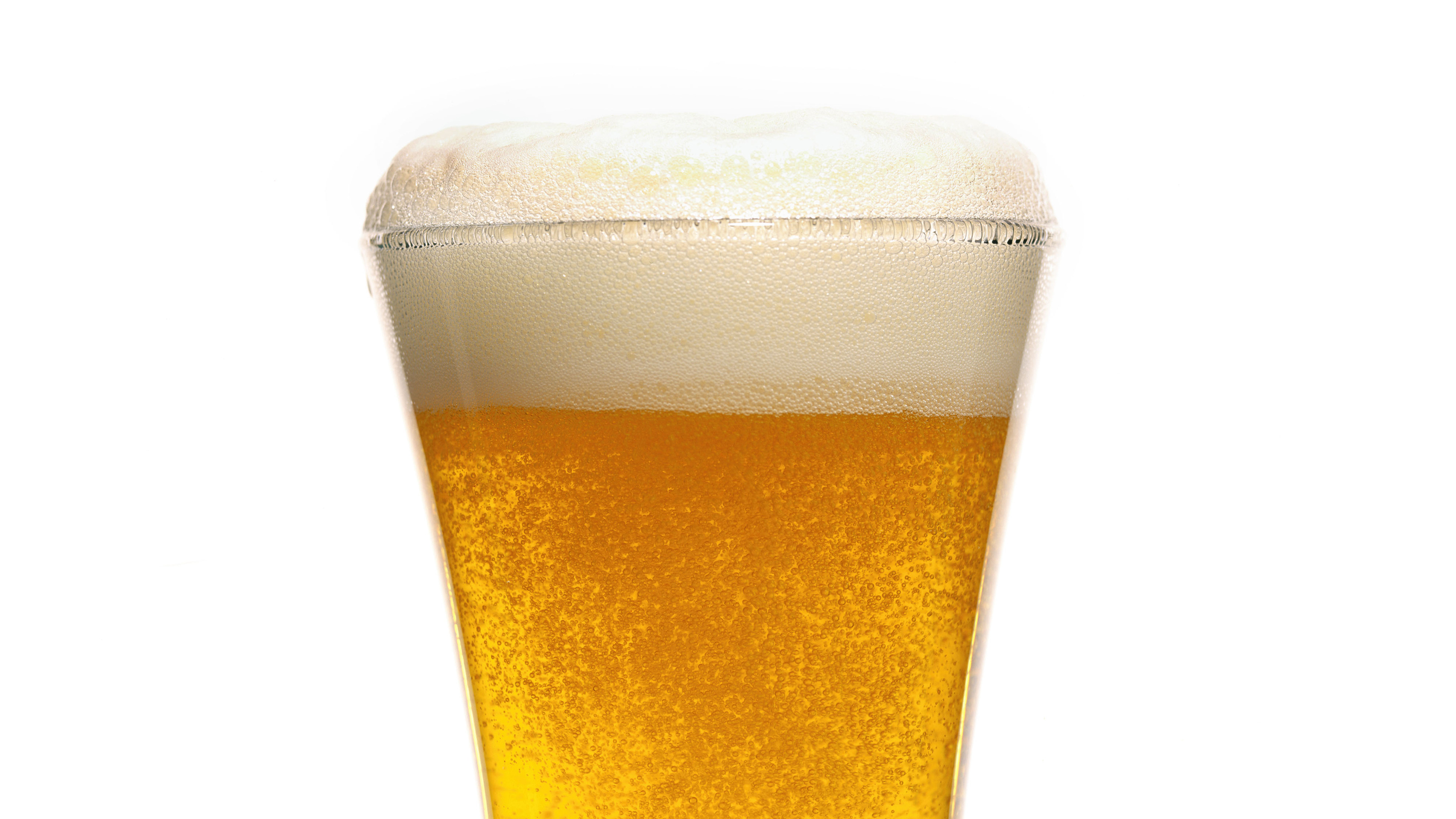
How many bubbles are in a glass of beer?
Beer's effervescence affects its flavor.

When you pour a glass of beer, a frothy cascade of fizz rises to the top; as more and more tiny bubbles coalesce, they form a nose-tickling layer of foam.
At first, that frothy stream of carbonation seems endless. But just how many bubbles can emerge from a glass of beer before it goes flat?
Gérard Liger-Belair, a professor of chemical physics at the University of Reims Champagne-Ardenne in France, had previously explored this effervescent subject in Champagne, calculating that one flute produces about 1 million bubbles. Recently, Liger-Belair peered into the depths of beer glasses and found that they produce twice as many bubbles as Champagne — with up to 2 million bubbles popping in a half-pint glass, according to a new study.
Related: When was beer invented?
Archaeological evidence shows that people have been brewing and drinking beer for at least 5,000 years and possibly for as long as 13,000 years, Liger-Belair and co-author Clara Cilindre, an associate professor and researcher in the Molecular and Atmospheric Spectroscopy Group (GSMA) at the University of Reims, reported in the study. The beverage "is by far the most popular alcoholic drink worldwide," with global production reaching nearly 53 billion gallons (200 billion liters) per year, and bubbles and foam are an important part of the beer experience, Liger-Belair told Live Science in an email. This is especially true of lager, the most popular type of beer, Liger-Belair said.
"It seems pertinent to us to bring some more knowledge about bubble formation, bubble size and finally about the issue of the total number of bubbles likely to form in a glass of beer along the entire natural degassing process," he said.
Beer is typically made of four ingredients — malted cereal grains, hops, yeast and water — which are then fermented. This process breaks down carbohydrates to produce alcohol, sugars and carbon dioxide (CO2). When beer is bottled or canned, additional CO2 is added, creating pressure in the container. Once the seal on a can or bottle is broken, the liquid becomes supersaturated with CO2, which is then released as tiny bubbles.
Sign up for the Live Science daily newsletter now
Get the world’s most fascinating discoveries delivered straight to your inbox.
For the study, the researchers looked at beer that was 5% alcohol by volume, pouring about 8 ounces (250 milliliters) of beer at a temperature of 42 degrees Fahrenheit (6 degrees Celsius) into 17-ounce (500 ml) glasses. The scientists determined that the overall number of beer bubbles would be mostly affected by three factors: concentration of dissolved CO2 in the glass, volume of the bubbles, and the point at which beer becomes so CO2-depleted that no more bubbles can form.
Tiny flaws in beer glasses also help CO2 bubbles emerge from the liquid, the study authors found. Dissolved CO2 would collect around pits and crevices larger than 1.4 micrometers wide, forming streams of bubbles. High-speed photography then showed the bubbles getting bigger as they rose, capturing even more CO2 from the beer. In total, a glass of beer of this volume would generate between 200,000 and 2 million bubbles, according to the study.
However, this research wasn't just about counting bubbles, the scientists said. When bubbles in a beverage pop on a drinker's tongue, they enhance subtle flavors; by studying effervescence in liquid, scientists can learn how beverages behave under different conditions and how that can affect their taste, Liger-Belair said in the email.
While the quantity of dissolved CO2 in beer is "a key parameter" for understanding this, the geometry of the glasses that hold the drink also plays an important part, "so that we can easily imagine modifying some beer and glass parameters for a better overall sensory experience," he said.
"We believe that the beer industry could benefit from more knowledge about bubble science," Liger-Belair added.
The findings were published online March 31 in the journal ACS Omega.
Originally published on Live Science.

Mindy Weisberger is an editor at Scholastic and a former Live Science channel editor and senior writer. She has reported on general science, covering climate change, paleontology, biology and space. Mindy studied film at Columbia University; prior to Live Science she produced, wrote and directed media for the American Museum of Natural History in New York City. Her videos about dinosaurs, astrophysics, biodiversity and evolution appear in museums and science centers worldwide, earning awards such as the CINE Golden Eagle and the Communicator Award of Excellence. Her writing has also appeared in Scientific American, The Washington Post and How It Works Magazine. Her book "Rise of the Zombie Bugs: The Surprising Science of Parasitic Mind Control" will be published in spring 2025 by Johns Hopkins University Press.









